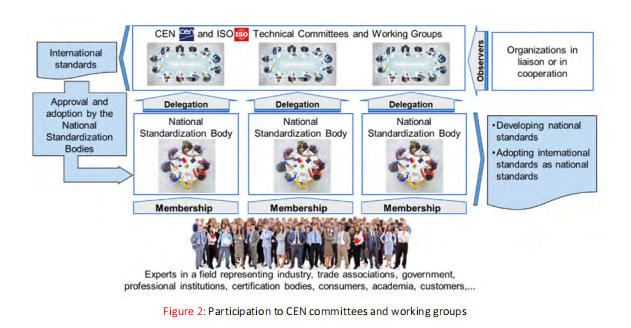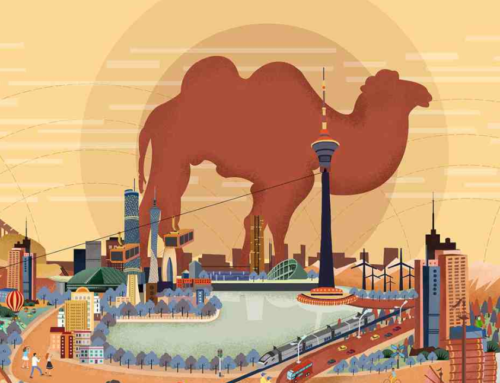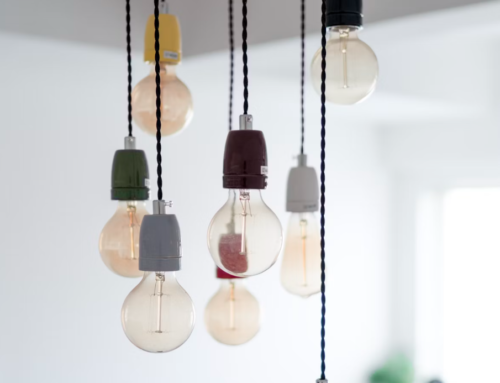China Standardization Magazine had an interview with Mr Esfandiar Gharibaan, Chairman of CEN/TC 10 and Vice President of Codes and Standards in KONE Corporation. The main topic is about EU Harmonised Standards Improve Safety of Lifts, Reduce Costs and Facilitate Trade. The interview will be uploaded in three parts. Here in the following is the second part of the interview.
What is EU Harmonised Standard? And which standards developed by CEN/TC 10 have been and will be recognized as EU Harmonised Standards? As Chairman of CEN/TC 10, how do you collaborate with the EU in this harmonisation process?
In the EU regulatory framework, the requirements in the technical regulations define the safety objectives to be reached. However, those regulations do not describe the technical specification to achieve those safety objectives. EU Harmonised Standards provide the necessary technical specifications to fulfill the safety objectives of the regulation. EU Harmonised Standards are developed by the European Standardization Organisations, CEN, CENELEC (European Committee for Electrotechnical Standardization) and ETSI (European Telecommunications Standards Institute). Those standards are requested, checked, and approved by the EU Commission (EU regulators). For example, the regulation for lifts (the EU Lifts Directive) requires that the lift landing doors have adequate strength, but it does not describe the technical specifications for the level or method to verify the adequate strength. The EU Harmonised Standard, EN 81-20, provides detailed technical specifications, testing and verification method for the lift landing doors. Therefore, a lift landing door designed according to EN 81-20 is considered to be in conformity with the regulatory requirements (safety objectives) for the lift landing doors.
Distinct and separate roles of the regulation, defining safety objective without describing technical specification, versus EU harmonised standard, defining technical specification which fulfills the safety objective, has many benefits. For instance, regulations are technology neutral, and they do not need to be revised regularly due to the changes in technologies and the market greatly benefits from the stable regulation. On the other hand, Harmonised Standards are continuously evolving and reflecting the latest state of the art, innovations, and technologies, thus ensuring that the products are in accordance with the latest safety specifications.
This approach to the regulatory framework clarifies the roles and responsibilities of the regulator versus standardization organisation, while requires and encourages cooperation between them. The work program of CEN/TC 10 includes 50 standards. 33 of those standards are the EU Harmonised Standards for lifts, escalators/moving walks, lifting platforms and building hoists. As the chairman of CEN/TC 10, I work closely with the EU Commission to define the standardization need in support of the EU regulations, formulate the criteria for acceptance of the standards by the EU Commission and ensure that the development process and the content of the standards are in line with the expectations of the Commission. I also make sure that the questions, comments, and issues raised by the EU Commission are adequately addressed, and if needed, the standards are aligned accordingly. In addition, I am a member of the EU Commission expert group which contributes to the development of the EU regulations for lifts.
Undoubtedly, experts from big companies play a key role in developing European standards at technical committees of CEN. How is the participation of small and medium enterprises (SMEs) in this process? What expertise and experience can they bring to European standards?
Members of the working groups and committees in CEN, the same as in ISO, are appointed by the CEN national members. Therefore, to directly participate in drafting of the standards, experts should be the members of their national standardization body. See Figure 2 for a simplified view of the structure and correlations between national and international committees and working groups.

European standardization is a transparent and inclusive process. All stakeholders and interested parties are welcome to join and to contribute to the work. SMEs are especially welcome to join. I strongly believe that technical experts of SMEs have considerable expertise and technical competence that can greatly contribute to the standardization work. For example, many SMEs are providing customized solutions in the market, which requires deep understanding of the standards and their proper application. Most SMEs are operating in a national market, thus they are very much aware of the market needs and the technical requirements for the standards, as well as need for more accurate and precise formulation of the clauses of the international standards. Therefore, SMEs’ contribution may help to ensure that the European/international standards provide relevant technical specifications, and the clauses are formulated clearly to avoid misunderstandings or misinterpretations of the content of the standards.
However, SMEs may have limited human or financial resources to participate at the European level. Therefore, SMEs are strongly encouraged to join their national standardization body. This will give them the opportunity to be fully aware of the standardization developments and the content as well as being able to provide comments during the development process and voting for acceptance of rejection of the standards.
In addition, organisations such as Small Business Standards (SBS) or European Federation for Elevator Small and Medium-sized Enterprises (EFESME), which are representing the interests of the SMEs, are actively participating in the standardization work and provide input from their respective members.
It is essential to listen to the voice of all stakeholders when developing a standard. How do consumers participate in the development of an European standard? Are their comments reflected in a standard? Please give an example.
Experts from the organisations representing consumers are also welcome to join the standardization work. Their participation may be achieved at the same structure as mentioned in Figure 2. However, the European consumer voice in standardization is the European Association for Coordinating Consumer Representation in Standardization (ANEC). ANEC enjoys strong support from the EU Commission and CEN and it is empowered to provide comments and cast a vote for accepting or rejecting the draft standards. ANEC is in liaison and in close cooperation with CEN/TC 10. ANEC experts participate in several working groups and provide their input and comments during the standardization process.
For example, ANEC has provided considerable number of requirements, comments and input related to the accessibility to lifts such as car dimensions for the wheelchair users, level of lighting inside the car or level of contrast for better visibility of the pushbuttons, etc. Those requirements have been incorporated into the EN 81-70 on accessibility to lifts for persons including persons with disability.
Source: China Standardization Magazine, 1st issue, 2023.




